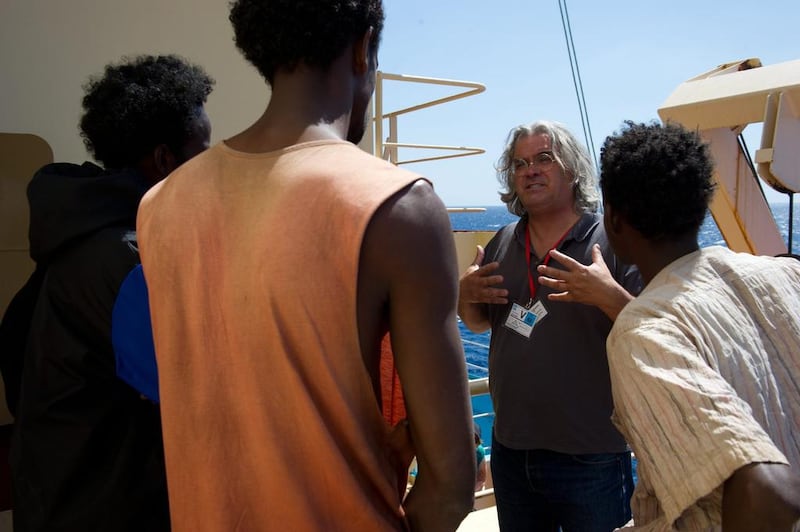True stories can be a tricky proposition in film. This year’s Diana is proof that even with celebrated talent behind and in front of the camera, you can fall victim to myriad problems. Such issues faced Captain Phillips, the dramatisation of the 2009 hijacking of the US container ship MV Maersk Alabama and the subsequent kidnapping of Captain Rich Phillips, played in the film by Tom Hanks. With the real-life events currently the subject of a lawsuit brought by Alabama’s crew members, any production would require an air of realism and believability. Luckily, the man responsible for the film was able to do just that.
Having brought horrific moments in history to the screen in Bloody Sunday (2002) and United 93 (2006), there was little doubt the former journalist Paul Greengrass was the perfect choice as director for this story. Famous for bringing a documentary-like authenticity to his films, which also include the latter two Bourne movies, Greengrass knew that the story of the kidnapped sea captain was something he wanted to do.
“The most interesting or compelling stories to me are ones about the real world,” he says. “I was captivated by this particular story and amazed that this part of the world had not been explored more thoroughly in film.”
Casting real Somalis as the pirates was essential for the production, but the filmmaker was surprised at how easy the process was. “We had this selection of actors to choose from, when we really were anticipating a struggle,” he recalls. “The actors we cast understood that part of the world, what these characters might have felt and the proof of that is on screen.”
Captain Phillips was shot at sea, on a container ship identical to the one the real-life incident occurred on.
“These are real ships, there were real hazards, so as much as you want to be making something that feels authentic, we had measures in place to make sure no one was hurt,” explains Greengrass.
They were also at the mercy of the elements, he adds. “If the sea was too choppy or aggressive, we couldn’t shoot. If the sea was too calm, we couldn’t shoot. We had to wait for just the right conditions.”
The Englishman was philosophical about the experience, however. “It would have been naive not to anticipate some sort of disruption when you’re filming in those conditions,” he says. “We knew that was part of the deal with this story.”
After a few years delivering movies that were not particularly well-received, many believe that Hanks’s performance, including a particularly moving scene towards the end, may see the two-time Academy Award winner add to his collection of accolades.
“In his development of the character, he impressed not only me but everyone working on the film,” Greengrass says of his star. “It wasn’t just turning up and saying lines on a page, he worked very hard. It’s a really great performance and it was a pleasure for everyone involved to see him create that over weeks of shooting.”
Commentators tip Greengrass to join Hanks in the running for awards next year. While he won’t be drawn on that conversation, the filmmaker is gratified by the reaction the film has received. “I’m very pleased that audiences respond positively to it. We’re very proud of the way we were able to portray these events. I hope people take away something from it.”
• Captain Phillips is outin UAE cinemas tomorrow
[ artslife@thenational.ae ]





